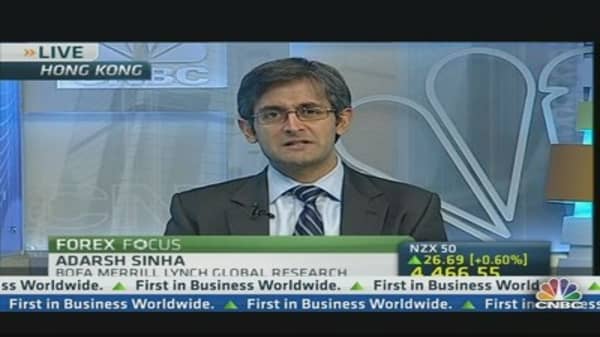India's rupee slumped more than 1 percent to a record low against a broadly robust U.S. dollar on Monday, but strategists say it's not all gloom and doom for the battered currency.
The rupee weakened to 57.77 per dollar, taking its losses over the past month to more than 6 percent, as the greenback gained on data showing weakness in China's economy and Friday's U.S. payrolls pointing to improvements in the jobs market.
The move in the rupee comes almost a year after the currency last weakened to a record low against the dollar before bouncing back. It had been in a narrow range for much of the year before coming under pressure in early May.
Like other emerging market currencies, the rupee has been hurt by expectations for an unwinding of the Federal Reserve's monetary stimulus program as the U.S. economy rebounds and the impact that it will have on fund inflows into emerging market assets such as bonds.
(Read More: Wild Swings? Emerging Currencies Have It the Worst)
"We see the fundamentals for the rupee improving substantially in the second half of the year, the move today [Monday] doesn't change that outlook," says Deutsche Bank's chief economist Taimur Baig.
Reasons he gave for his call included a fall in the inflation rate that would help increase the appeal of rupee-denominated assets, expected improvements in India's current account deficit as the cost of importing gold falls and an expectation that the global sell-off in risk assets on concern about an unwinding of U.S. monetary stimulus is likely to abate.
(Read More: Why Market Watchers Aren't Giving Up on India)






